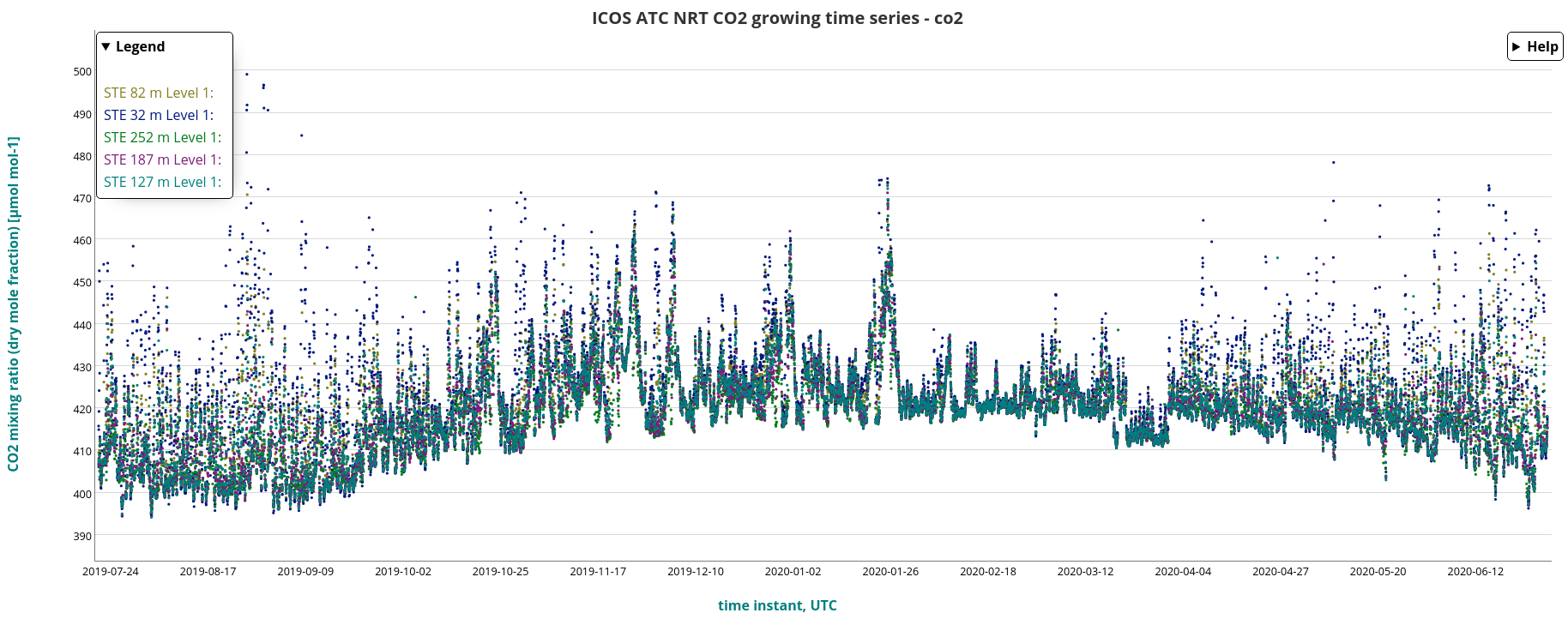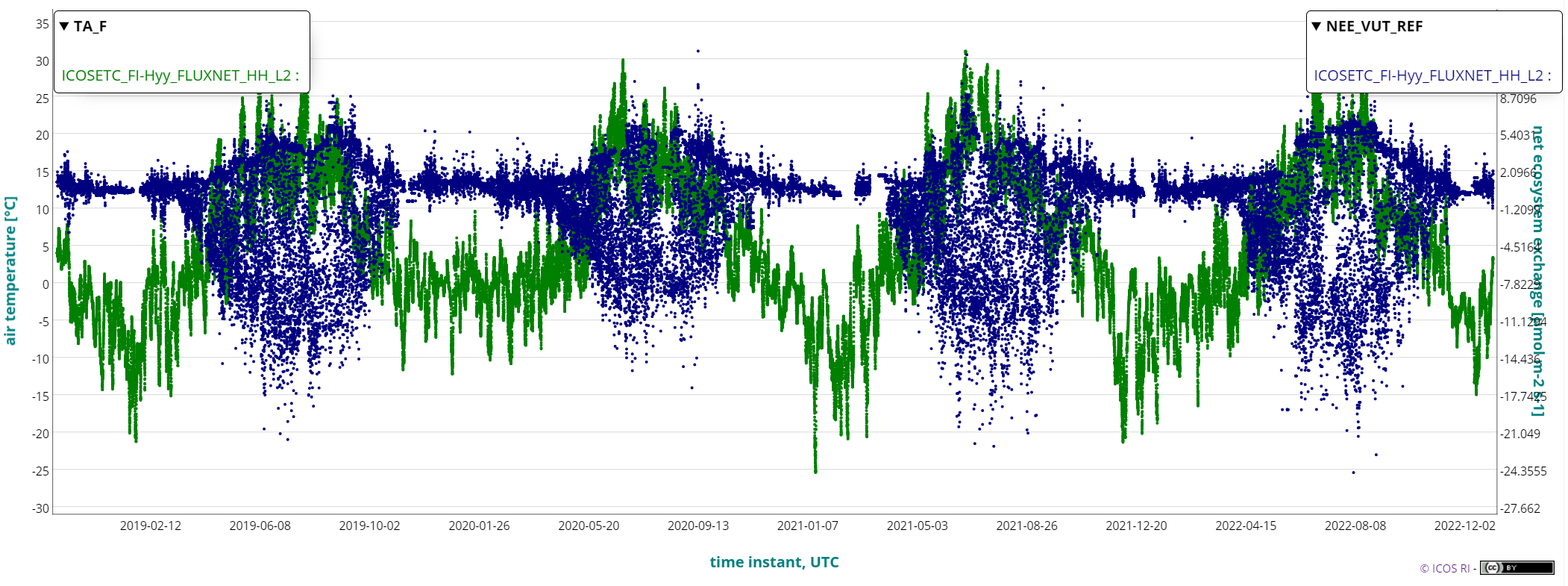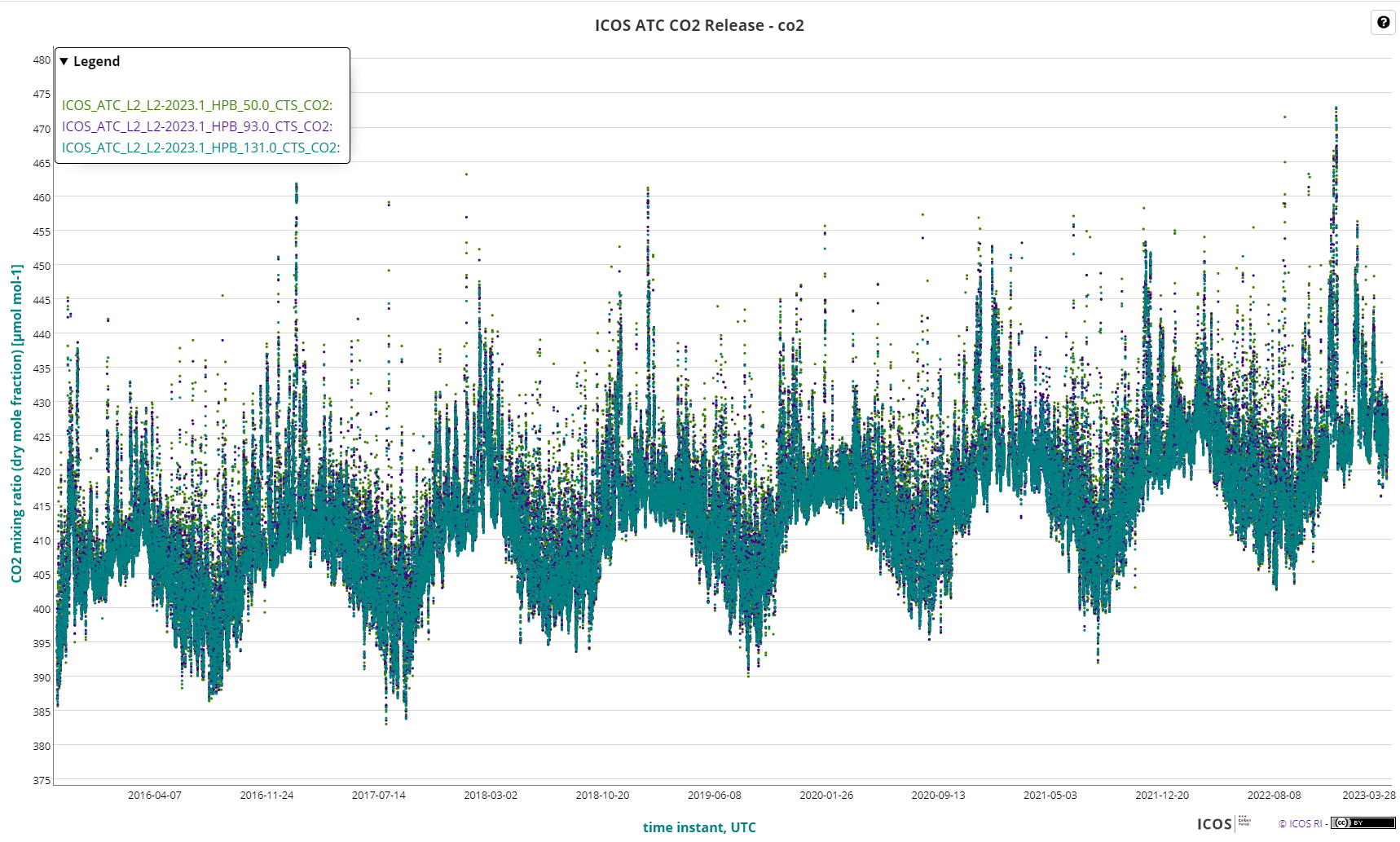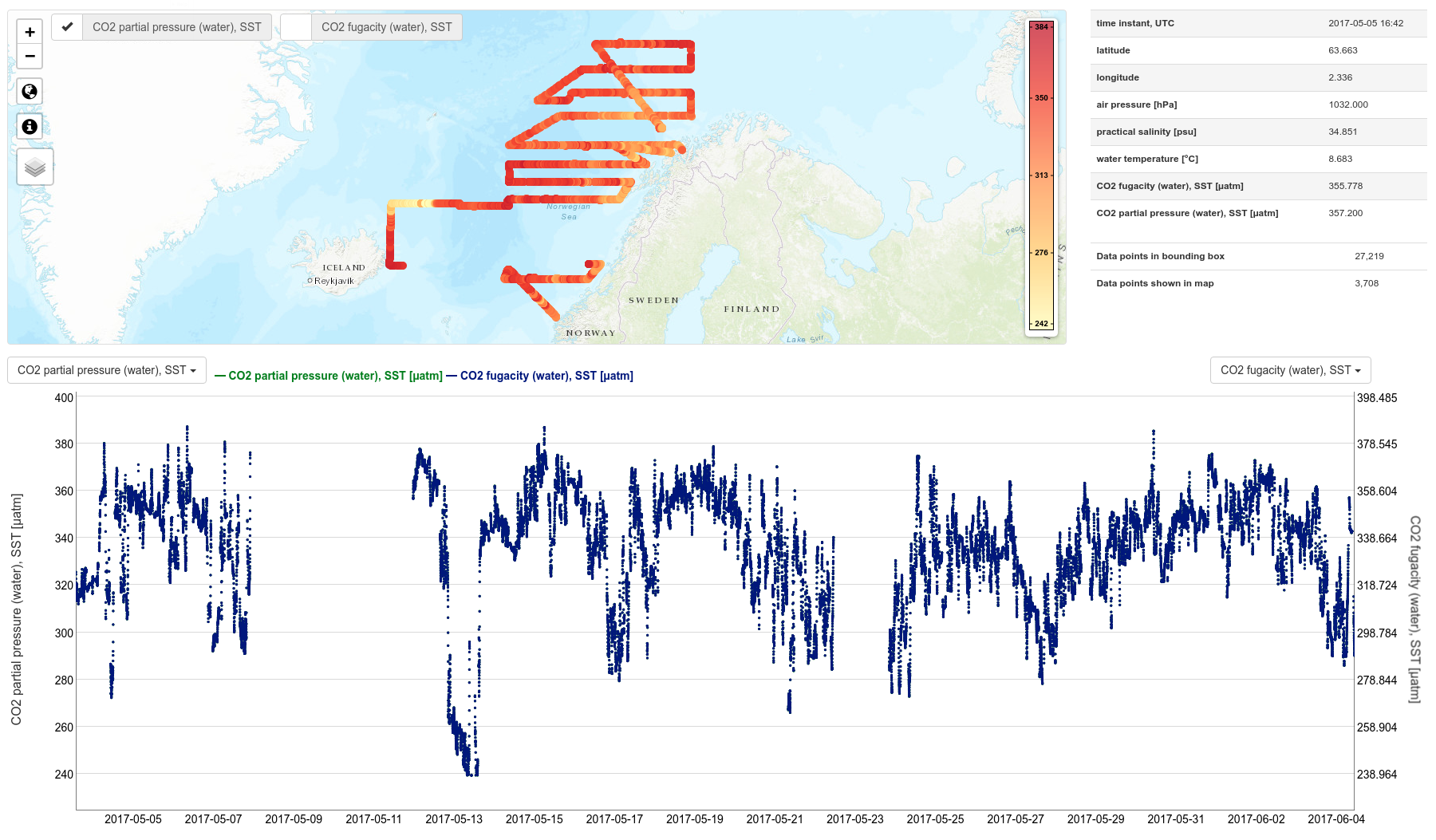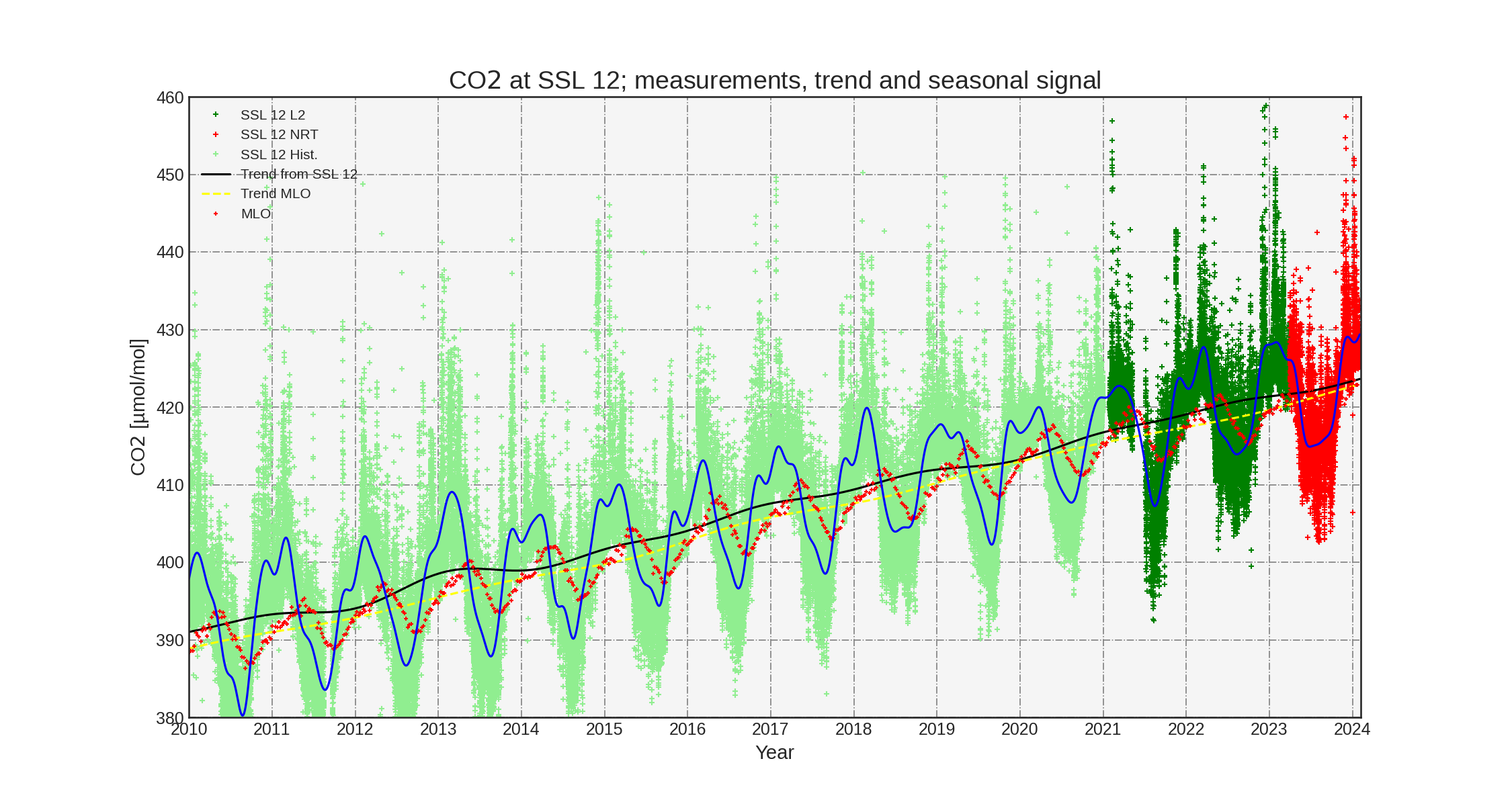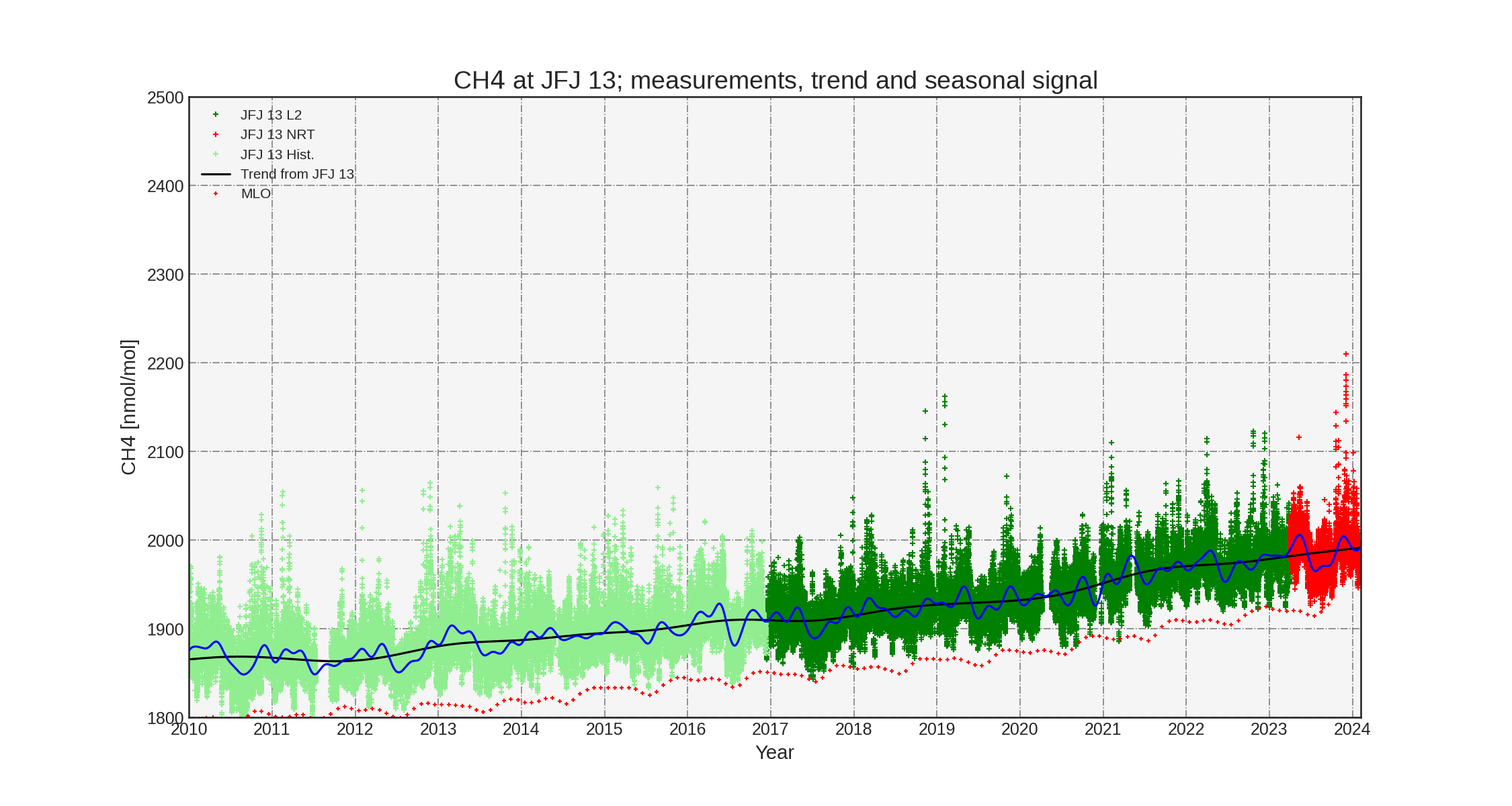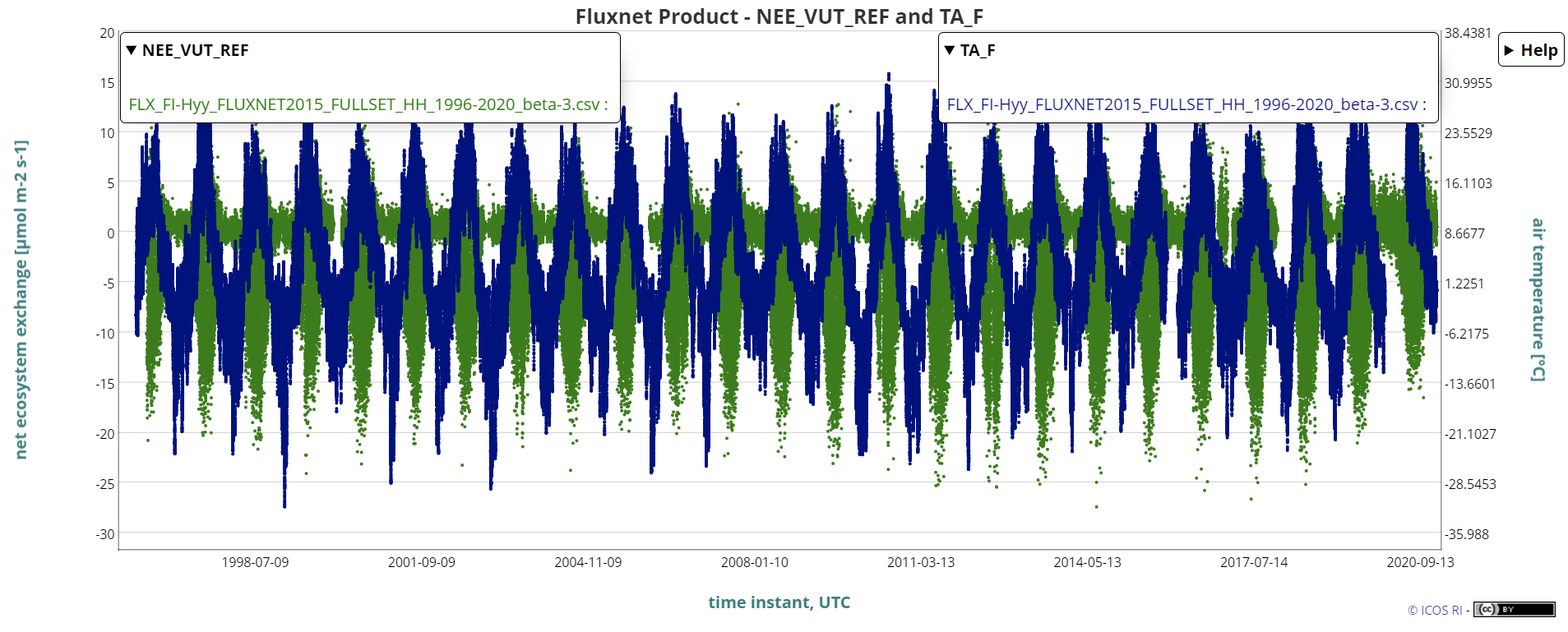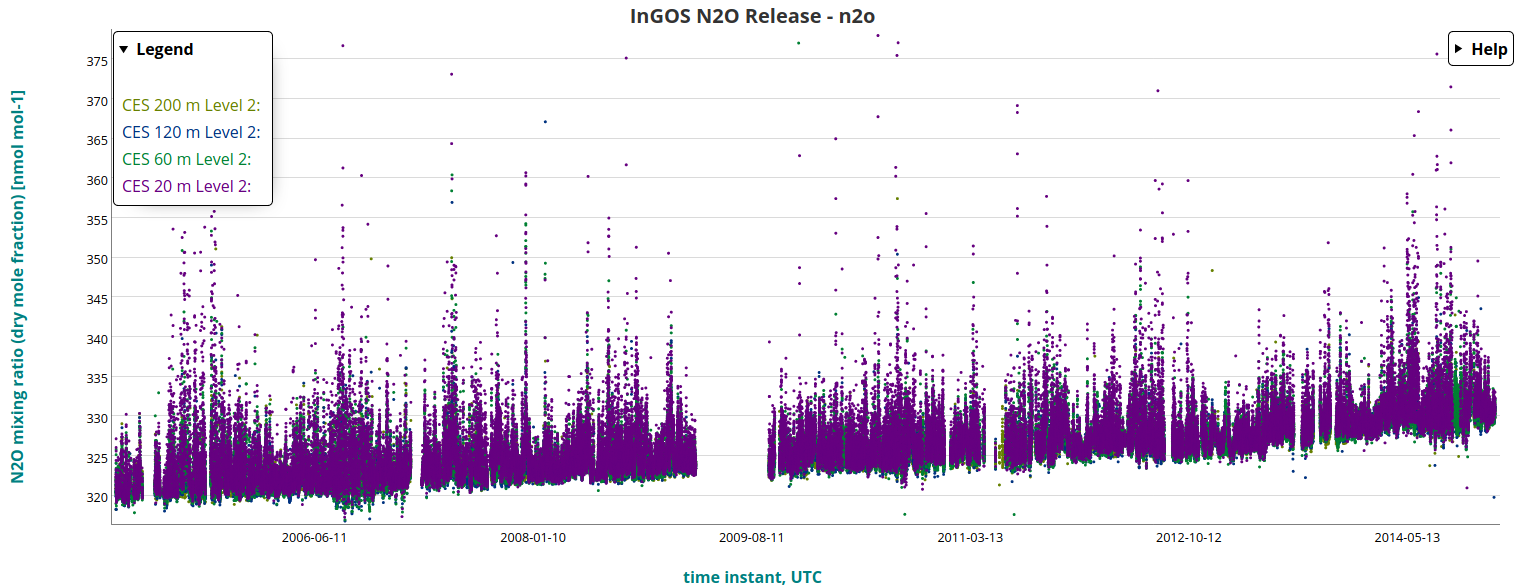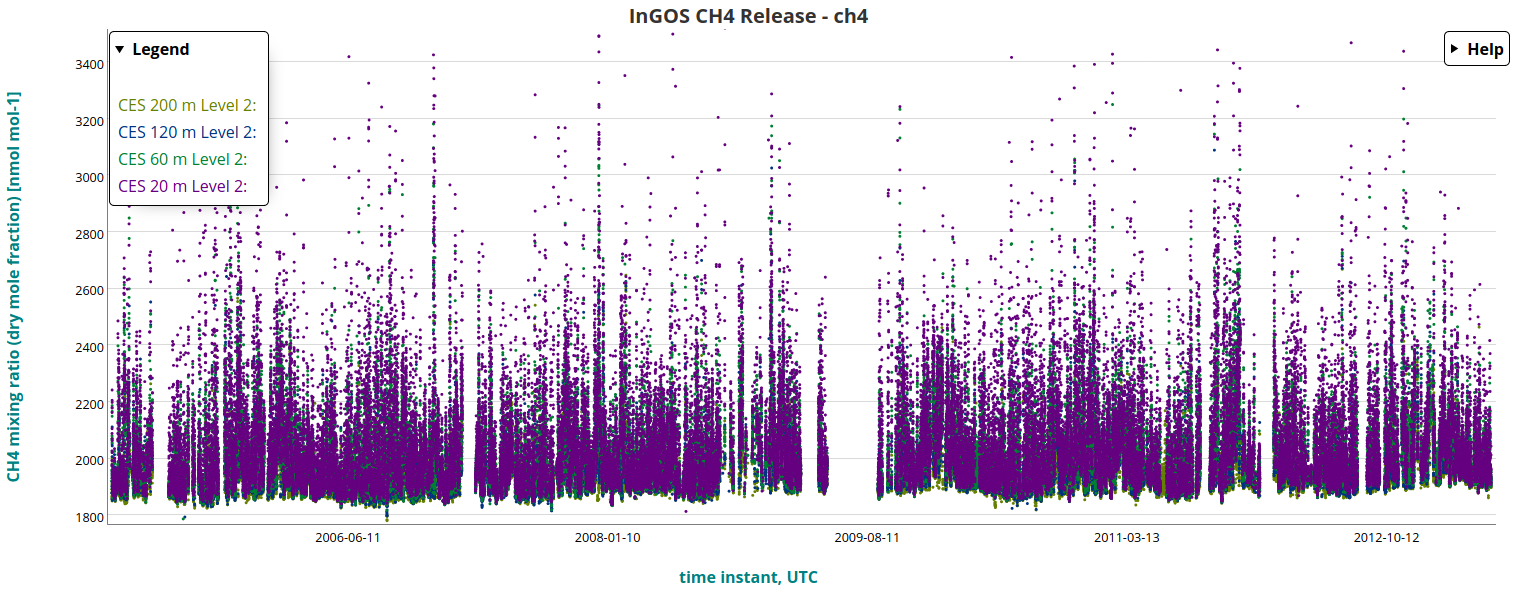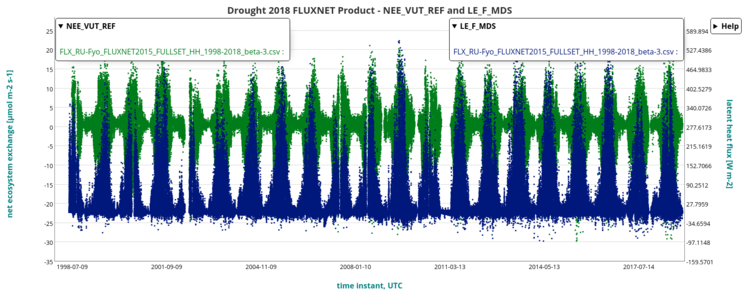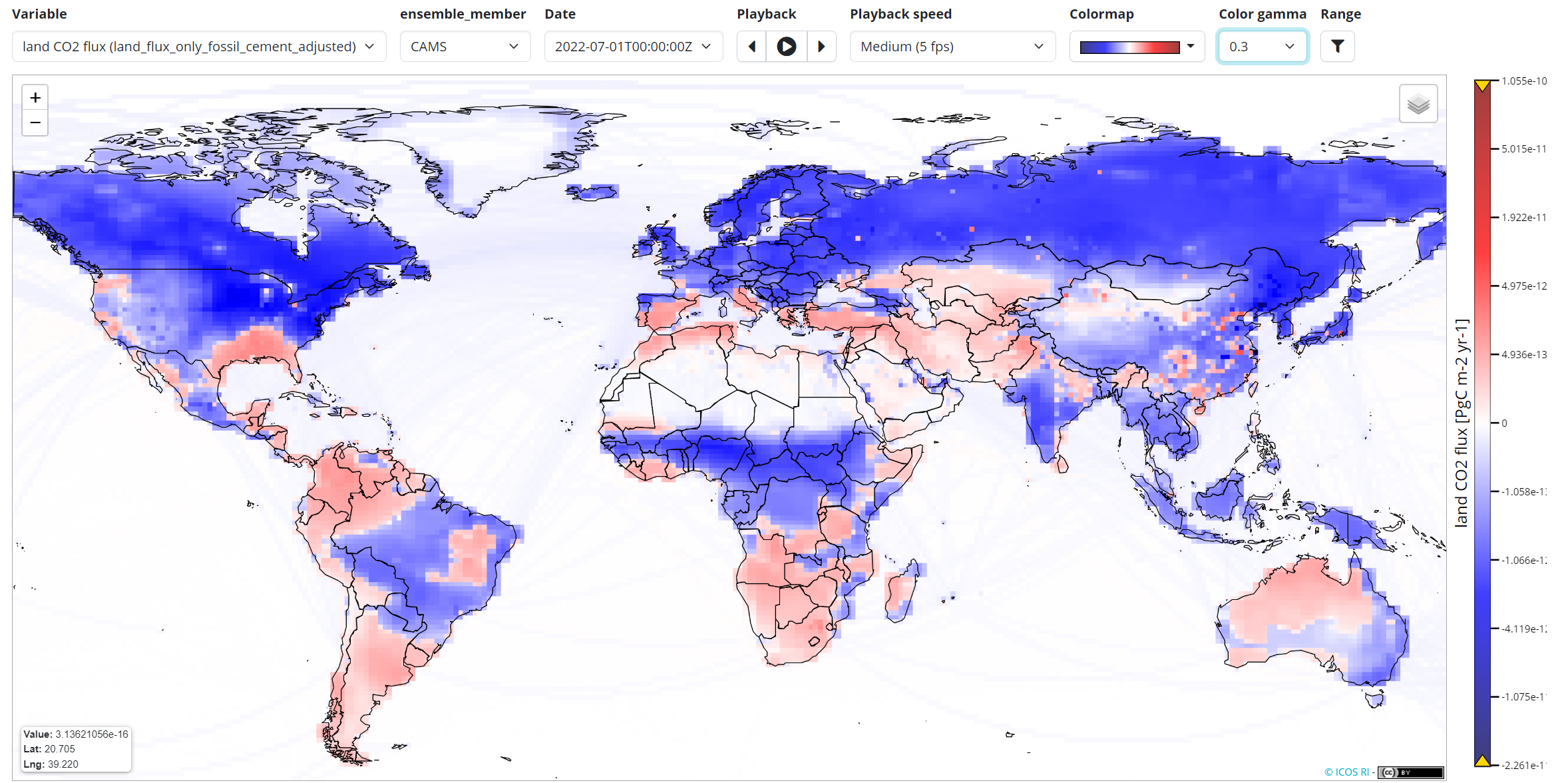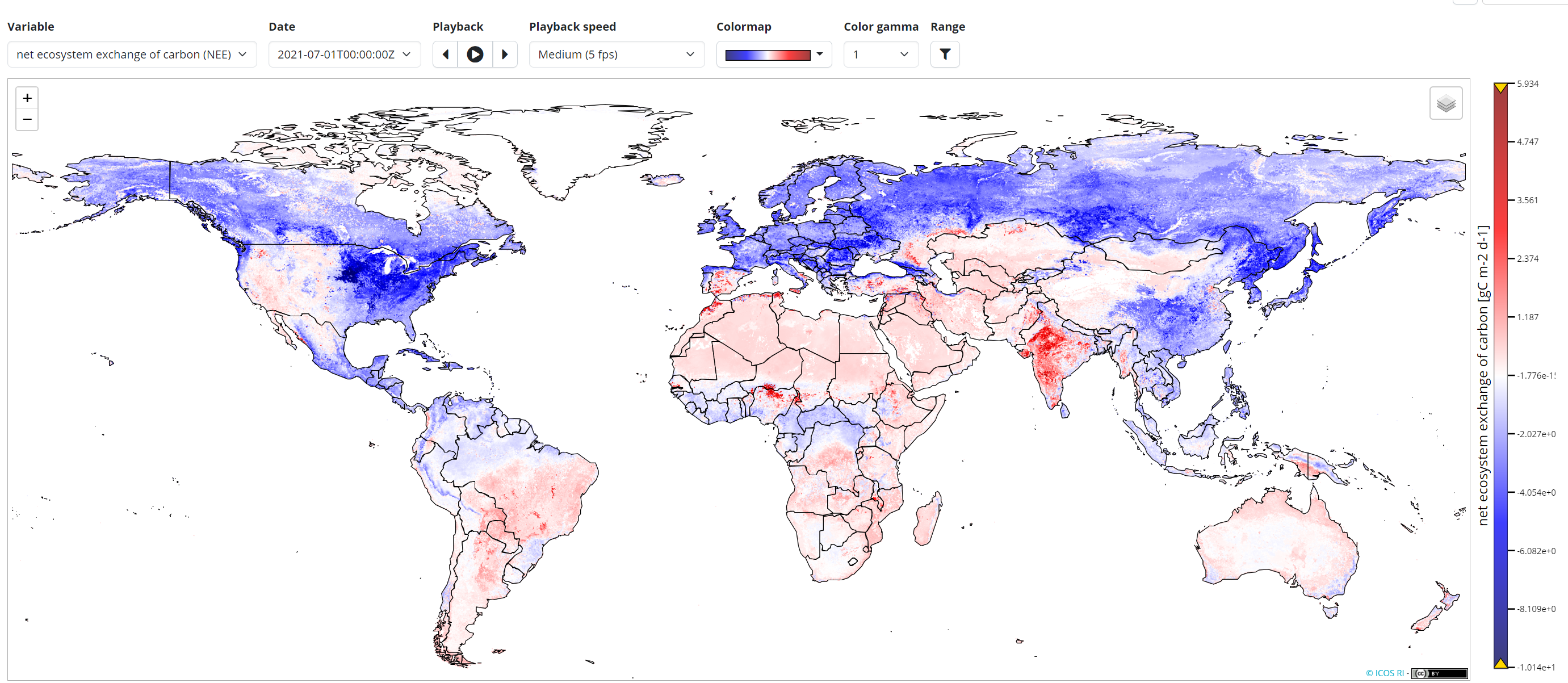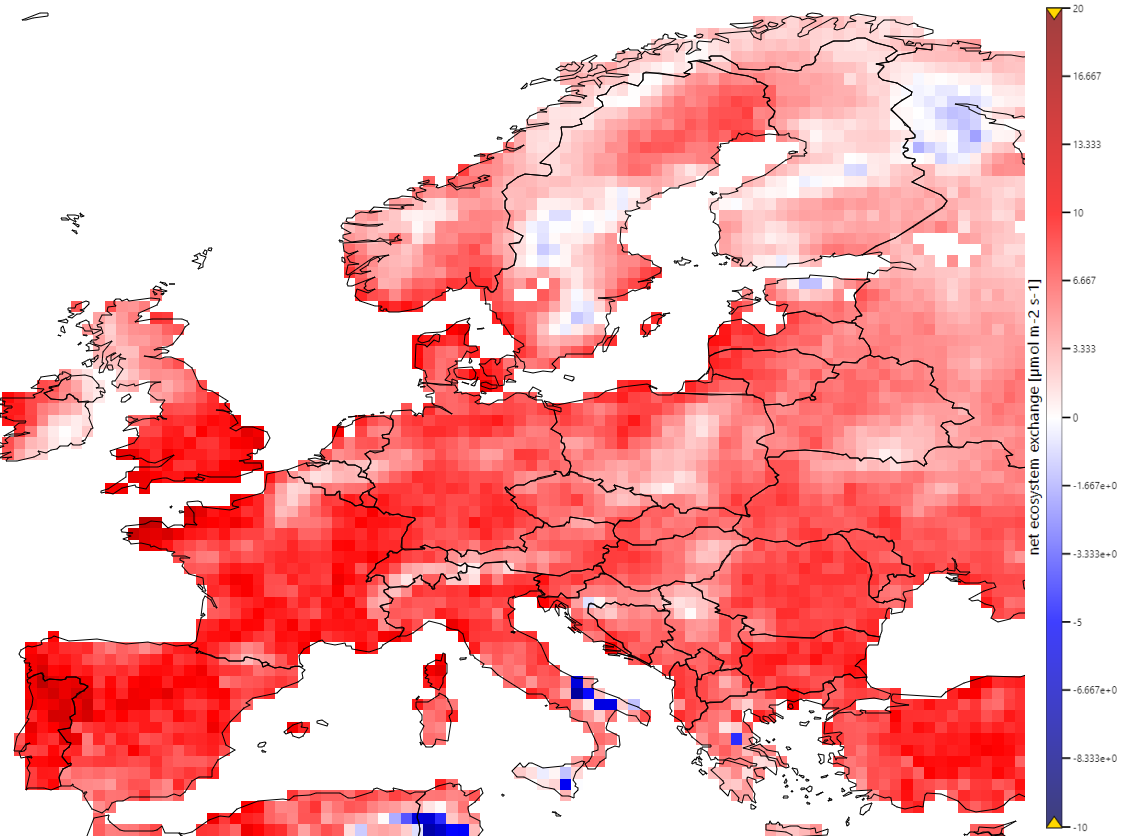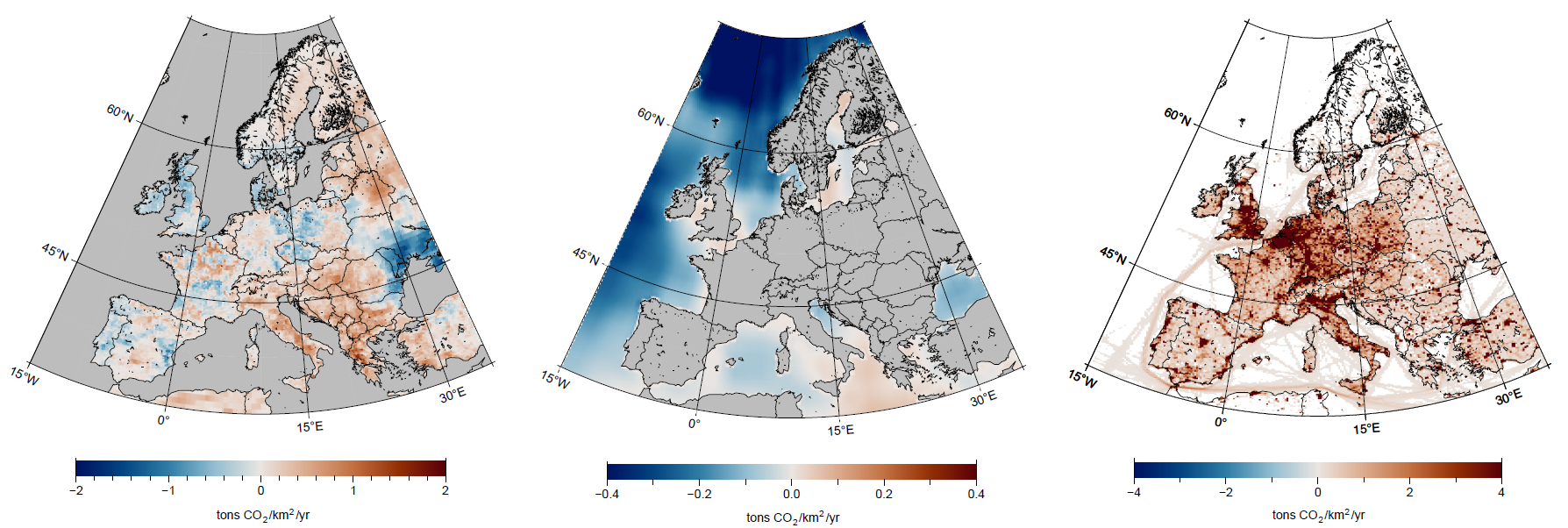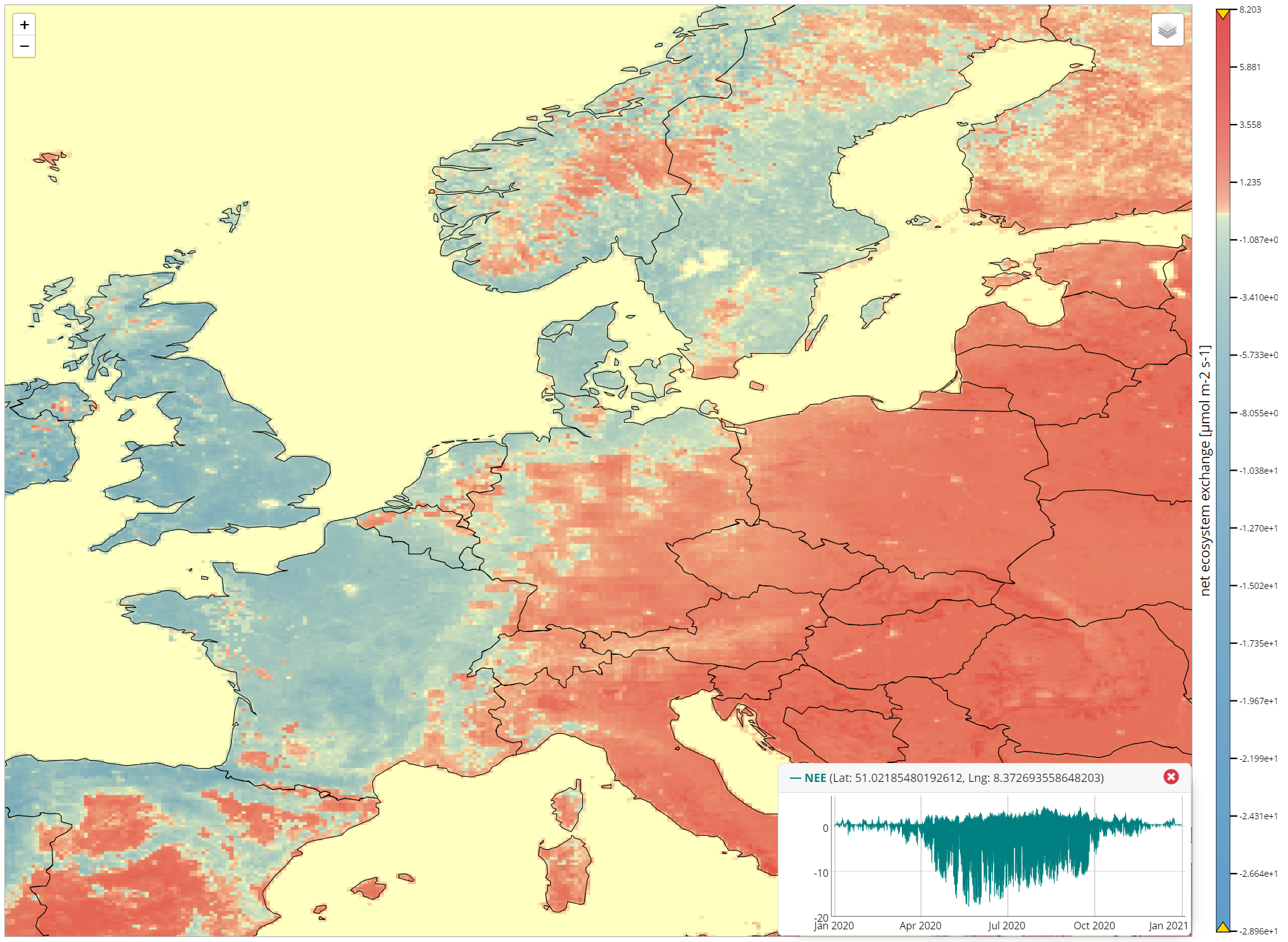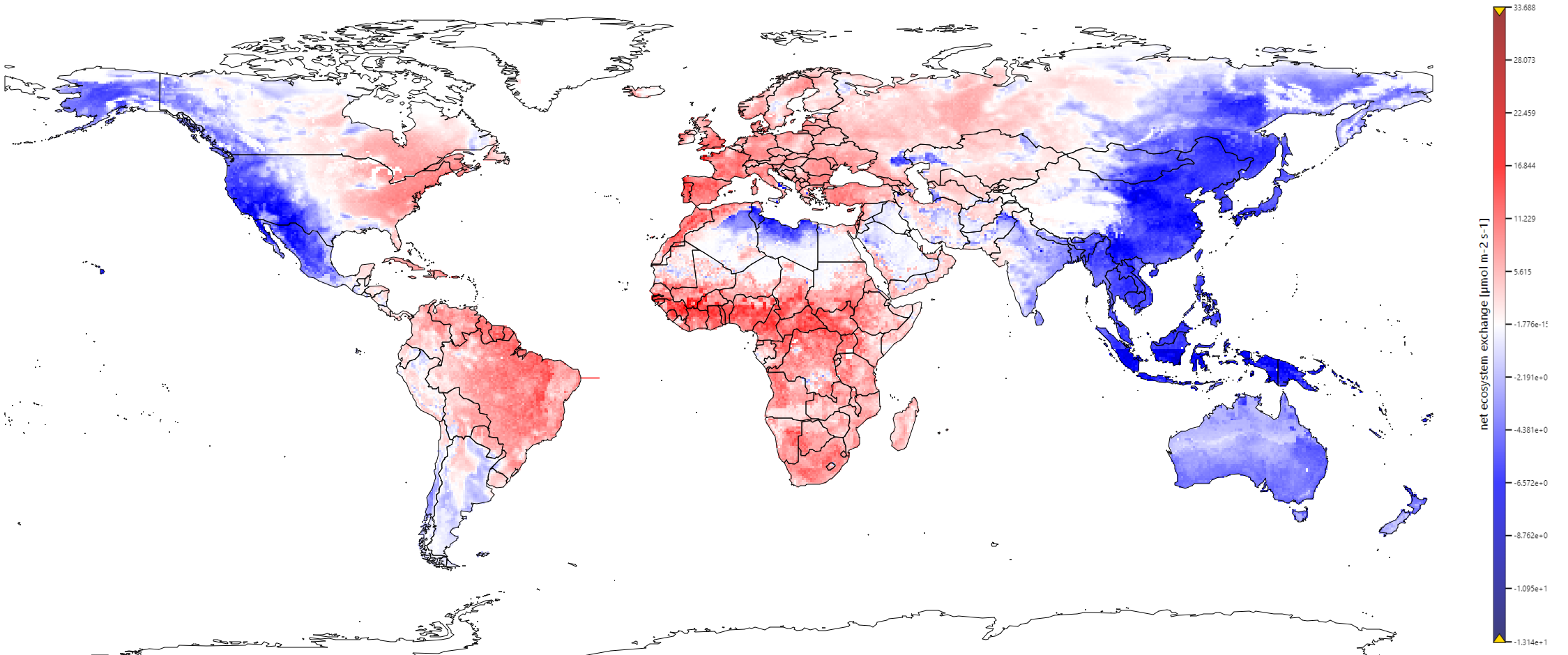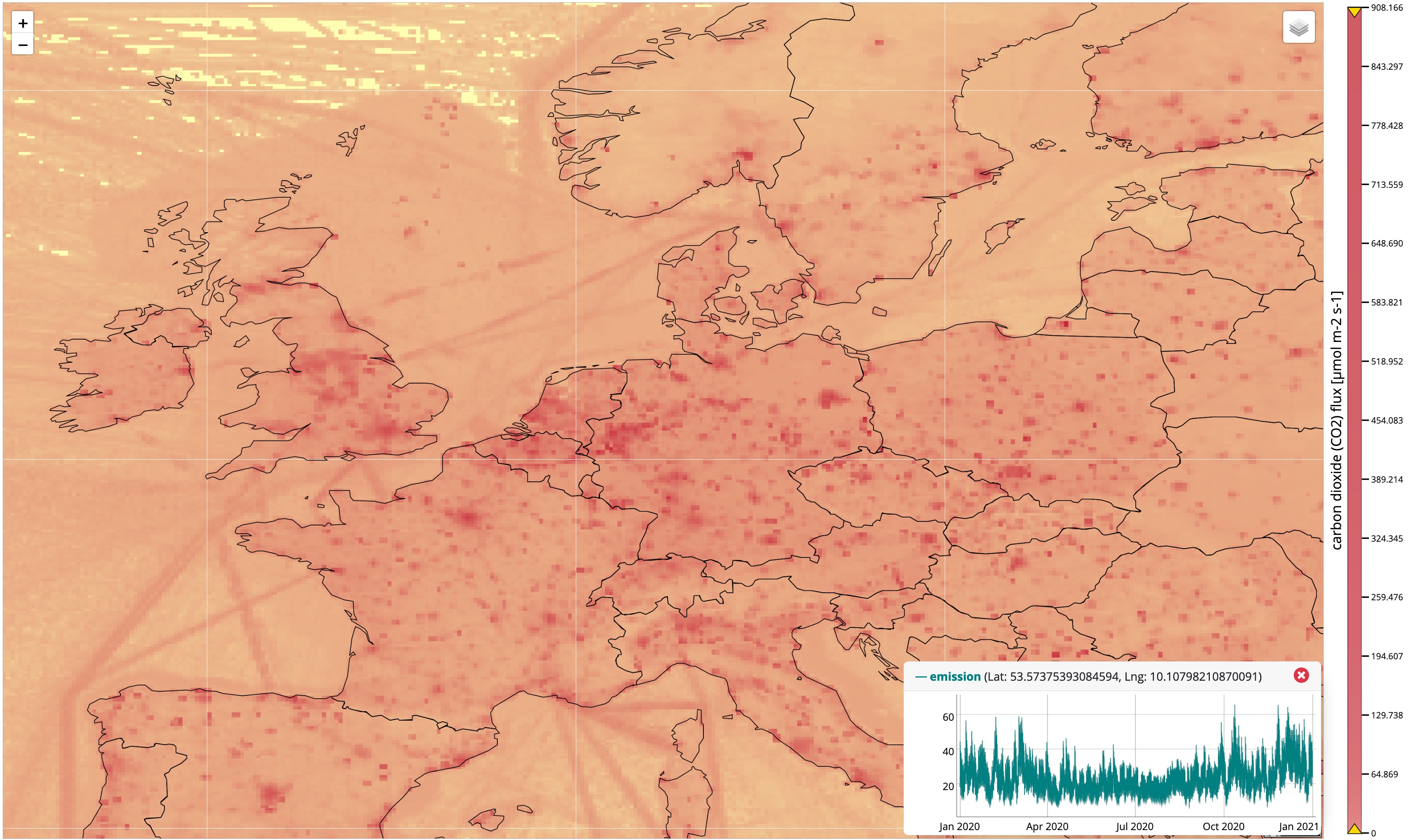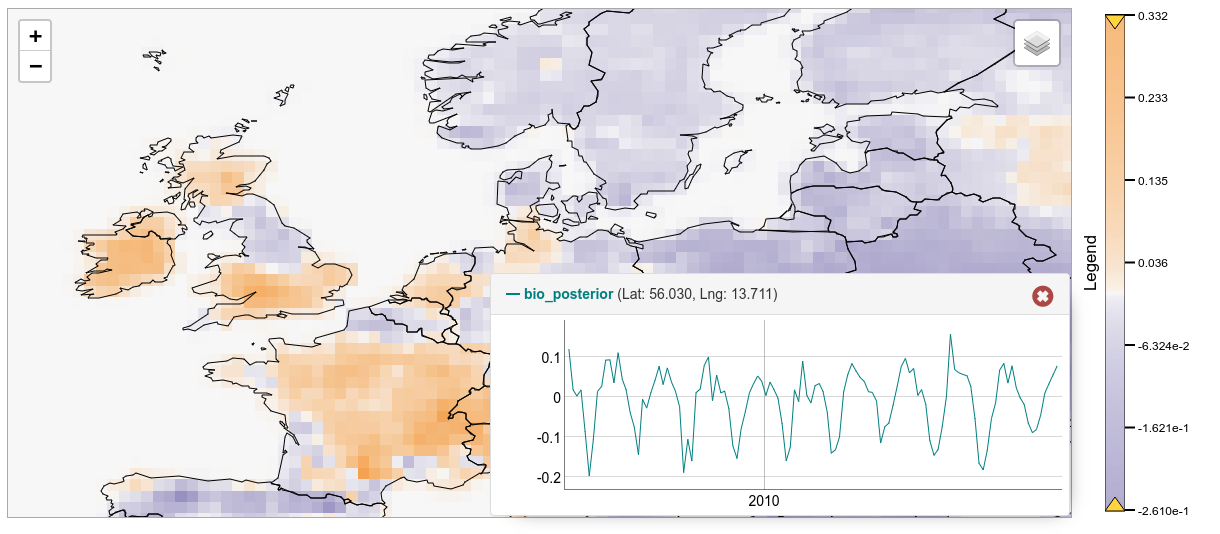Near Real-Time growing time series containing data from the atmospheric network of ICOS Research Infrastructure for the stations shown below in the tables. This collection contains measurements from currently (November 2023) 38 ICOS Ecosystem measurements stations, starting from the latest date of final released Level 2 data or the date of labelling.
Data products
ICOS Near Real Time Observational Data (Level 1)
Near Real-Time growing time series containing data from the atmospheric network of ICOS Research Infrastructure for the stations shown below in the tables. This collection contains the NRT hourly averaged data for the mole fractions of CO2, CO and CH4, measured at the relevant vertical levels of the measurements stations, starting from the latest date of final released Level 2 data or the date of labelling.
ICOS Final Fully Quality Controlled Observational Data (Level 2)
This is the 2023-2 INTERIM release of the ICOS final quality ecosystem data product that includes eddy covariance fluxes, meteorological observations, ancillary and biometric data and full metadata at 39 labelled ICOS stations in the ecosystem domain. The archives contain more detailed description of the different data files contained in the archives. Please note that the 2023 measurements included in this interim release don't cover the full year, but do essentially cover the growing season.
This 2023-1 release contains data from the atmospheric network of ICOS Research Infrastructure for 38 stations with atmospheric composition data at all available vertical levels at stations Birkenes, Cabauw, Gartow, Helgoland, Hohenpeißenberg, Hyltemossa, Ispra, Izaña, Jungfraujoch, Jülich, Karlsruhe, Křešín u Pacova, La Réunion, Lampedusa, Lindenberg, Lutjewad, Monte Cimone, Norunda, OPE, Ochsenkopf, Pallas, Plateau Rosa, Puijo, Puy de Dôme, La Réunion, Ridge Hill, Saclay, SMEAR-II Hyytiälä, Station Nord, Schauinsland, Steinkimmen, Svartberget, Torfhaus, Trainou, Utö - Baltic Sea, Westerla
This is release 2023 of the final quality controlled Level 2 data from the ICOS Ocean network. This collection of 54 files was produced by labelled ICOS stations and processed following the ICOS Ocean data protocols using the QuinCe software tool (https://otc.icos-cp.eu/data-processing). The data set covers the period 1 January 2023 - 31 December 2023.
Historic Observational Time Series For ICOS and Non-ICOS Stations
Atmospheric Greenhouse Gas Mole Fractions of CO2 collected by the ICOS ATC, covering the period 1972-2024, including final quality-controlled Level 2 ICOS data, release 2023-1 and NRT data up to 1 February 2024. During the most recent period, a selected set of stations, after being labelled as ICOS stations, observations follow the ICOS Atmospheric Station specification V2.0. Measurements and data processing for all time series is described in Ramonet et al., 2020.
Atmospheric Greenhouse Gas Mole Fractions of CH4 collected by the ICOS ATC, covering the period 1984-2024, including final quality-controlled Level 2 ICOS data, release 2022-1 and NRT data up to 1 February 2024. During the most recent period, a selected set of stations, after being labelled as ICOS stations, observations follow the ICOS Atmospheric Station specification V2.0. Measurements and data processing for all time series is described in Ramonet et al., 2020.
This is the release of the observational data product for eddy covariance fluxes at 73 stations in the ecosystem domain, part of them outside the ICOS network, covering the period 1989-2020. The data are in the standard format used for the ICOS L2 ecosystem products and also used by other regional networks like AmeriFlux.
This dataset for historic ambient N2O mole fractions is an important outcome of the FP7 InGOS project (http://www.ingos-infrastructure.eu, Grant Agreement Number 284274). Data from 12 stations have been reprocessed for the period 2000-2015; in some cases involving re-integration of chromatograms and in all cases re-calibrating the time series using updated assigned values for standard gases and target gases. All data have been brought to the same concentration scale (NOAA-2006A).
This dataset for historic ambient CH4 mole fractions is an important outcome of the FP7 InGOS project (http://www.ingos-infrastructure.eu, Grant Agreement Number 284274). Data from 17 stations have been reprocessed for the period 2000-2015; in some cases involving re-integration of chromatograms and in all cases re-calibrating the time series using updated assigned values for standard gases and target gases. All data have been brought to the same concentration scale (NOAA-2006A).
This is the release of the observational data product for eddy covariance fluxes at 52 stations in the ecosystem domain, part of them outside the ICOS network, from the Drought-2018 team and covering the period 1989-2018. The data are in the standard format used for the ICOS L2 ecosystem products and also used by other regional networks like AmeriFlux.
Elaborated Data Products (Level 3)
In this file, we include the data from the GCB2023 inversions on 1x1 degrees latitude-longitude. The variables include the prior and posterior land biosphere and ocean carbon fluxes. The land biosphere fluxes have been adjusted to a common fossil fuel emissions dataset (land_flux_only_fossil_cement_adjusted). This allows the inverse estimates to be compared to each other within this ensemble.
The X-BASE products are global fluxes based on the FLUXCOM-X framework which trains machine learning models on in-situ eddy covariance data and uses them to produce these global products. The X-BASE experiment is a basic configuration to serve as a baseline for the FLUXCOM-X framework and includes as predictors the core meteorological data, plant functional type classification as well as MODIS based vegetation indices and land surface temperature. XGBoost was used as the machine learning algorithm.
European hourly NEE, GPP and total respiration for 2010-2022 based on LPJ-GUESS (generated in 2023)
Collection of hourly CO2 fluxes for 2017-2023, format is cf-1.7 compliant netcdf, containing hourly estimates of biospheric fluxes, anthropogenic emissions (total and per sector), GFAS fire emissions and Jena CarboScope ocean fluxes, all re-gridded to match the resolution of the biospheric fluxes. Net ecosystem productivity (gross primary production minus respiration). Positive fluxes are emissions, negative mean uptake.
VPRM biosphere model results in Europe for 2006-2022. Biosphere-atmosphere exchange flux simulations were performed using:
Global hourly NEE, GPP and total respiration for 2010-2022 based on LPJ-GUESS (generated in 2023)
Anthropogenic CO2 emissions for Europe adjusted for the impact of the COVID-19 pandemic by using daily factors based on sector- and country-specific emissions read from https://carbonmonitor.org.
Ensemble of inverse modelling estimates of European CO2 fluxes for 2006-2015 as part of the EUROCOM inversion intercomparison; monthly fluxes; 0.5 deg. x 0.5 deg.; Supplementary material for Monteil et al., 2019, https://doi.org/10.5194/acp-2019-1008
